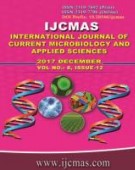


 National Academy of Agricultural Sciences (NAAS)
National Academy of Agricultural Sciences (NAAS)

|
PRINT ISSN : 2319-7692
Online ISSN : 2319-7706 Issues : 12 per year Publisher : Excellent Publishers Email : editorijcmas@gmail.com / submit@ijcmas.com Editor-in-chief: Dr.M.Prakash Index Copernicus ICV 2018: 95.39 NAAS RATING 2020: 5.38 |
Apomixis is a method of asexual reproduction in plants i.e., seed formation without fertilization with three main variants, viz., apospory, diplospory, and adventitious embryony. Genetic understanding of apomixis has been handicapped for a long time due to lack of techniques viz., for isolation of embryo sacs, use of flow cytometry, and availability of molecular markers for a rapid and accurate identification of apomictic genotypes (Crane and Carman, 1987; Peel, 1993). Apomixis is a consequence of deregulation of the genes involved in sexual reproduction. Harnessing apomixis is a major goal in applied plant genetic engineering. In this regard, efforts are focused on genetic and breeding strategies in various plant species, combined with molecular methods to analyze apomictic and sexual modes of reproduction and to identify key regulatory genes and mechanisms underlying these processes. These can open new avenues for the transfer of the apomixis trait to important crop species and will have far-reaching potentials in crop improvement regarding agricultural production and the quality of the products. This review paper contains an idea about apomixes, types, genes involved in genetic and molecular basis of apomixis and role in crop improvement. Therefore, it seems that apomixis is about to change the face of plant breeding forever.
 |
 |
 |
 |
 |